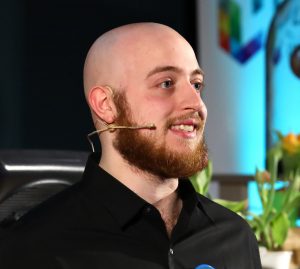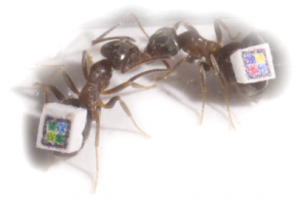CENOLI
Université Libre de Bruxelles, CP 231
Boulevard du Triomphe, B-1050 Bruxelles
E-mail: joffrey.planckaert [at] ulb.ac.be
Tel: 02 650 59 07 (from abroad +32 2 650 59 07)
Fax: 02 650 59 87 (from abroad +32 2 650 59 87)
Bibliographic sketch :
Ethologist up to the bone, I was always amazed by the multitude of behaviors which are pressed in a single purpose: survive. Stemming from a Bachelor’s degree in biology of the populations and from a Master’s degree in the sciences of the behavior, my subjects of preferences are: the spatial organization’s of animal societies and the animal welfare.
Projects:
The main objective of my PhD is to define the spatiotemporal organisation of trophallaxis behaviour among the Lasius niger ant. To that end, my aim in this project is to describe and define the trophallaxis network as well as identify and measure the transfers and the role of chemical nest marking on this network. The outcome of this study will bring answers regarding the principles and underlying mechanisms related to the transfer of food and fluids among groups of ants inside their nest while paying attention to the needs of the colony. Not only will this study identify their proximal factors (such as the interindividual differences and the chemical marking of specific zones of interest in the nest) but it will also monitor the efficiency of these transfers. The recognition of the leading processes of these emerging characteristics at a collective level compels us to describe the system’s basic components and their interactions. The links between the individual and collective stages can not be easily established. It is under this general circumstance that lays the objectives of this thesis and the experimental and theoretical methods it requires.
My main objective is the study of the impact of the colony’s size as well as the effect of starving on the spatiotemporal organisation of the throphallaxis behaviour. With time, this thesis will quantify the relationship of nest marking, especially with cuticular hydrocarbon, and the pattern of the trophallaxis network.
This work also has for objective to contribute to synthesize and integrate the current knowledge of the food transfer’s organisation and the laws regarding the ressources management among ants.
Publications:
Work in progress…


